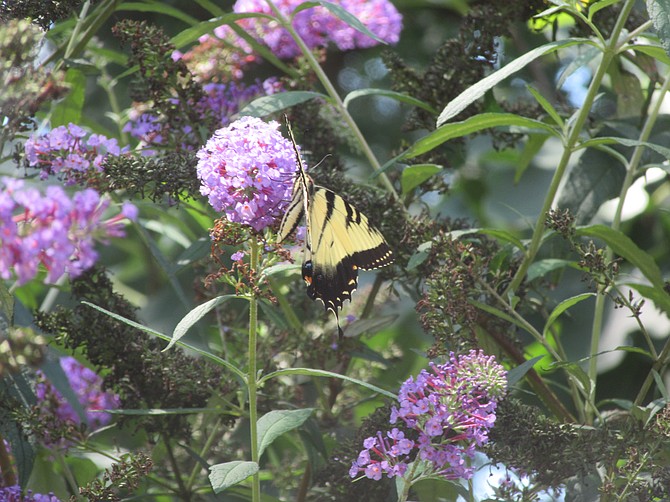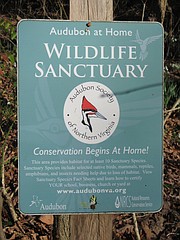The manicured lawn may be an iconic symbol of the American suburbs, but lawns have ecological downsides, and there are alternatives, Tami Sheiffer told members of the Friends of Mason Neck at a March 7 Zoom meeting titled “Mow Less, Grow More.” Sheiffer is the coordinator of the Fairfax County Park Authority’s “Watch the Green Grow” program.
“Americans love their lawns,” she said, but traditional turf provides little support for wildlife, and pesticides and fertilizers often used on lawns can wash down storm drains and pollute streams.
She urged attendees to “mow high,” keep grass between 3.5 to 4 inches tall. Typical turf grass has short roots and leaving grass at that height can encourage longer root growth which helps with drought tolerance. She also advised mowing every other week instead of weekly, especially in the spring, to help insects like bees. She encouraged “grasscycling,” leaving clippings in the lawn where they decompose quickly and return nutrients to the soil.
It’s true that some lawn may be needed, for example, for children’s play or high foot-traffic areas, but Sheiffer cautioned that grass won’t grow in some areas like shade, even with fertilizers and weed killers.
Using traditional gas-powered lawn mowers creates carbon emissions that contribute to global warming. “A gasoline-powered lawn mower pollutes as much in one hour as an automobile driven 20 miles,” according to a county brochure.
In a brief report, Mason Neck Education Specialist Elizabeth Sieglinger said that six Virginia state parks have reduced regularly mowed areas by 63 percent since 2017 and saved $7,000 a year.
Nature’s Interconnections
Native plants, once established, can mean no mowing, low maintenance and healthier habitats, Sheiffer said. Native plants are naturally-occurring plants that have evolved in a specific area, have adapted to local soil and climate conditions, do not need fertilizer and generally do not need water except during droughts. Most are perennials. Many wildlife species depend on the plants with which they co-evolved. “Plants and animals evolve together to create unique natural communities, weaving a complex web of interrelationships,” according to Virginia’s Department of Conservation and Recreation.
Many native plants provide nectar, pollen and seeds which are food for native birds, butterflies, bees and other wildlife. As an example, Sheiffer said that monarch butterfly caterpillars feed only on milkweed, their host plant. An oak tree is a “super plant,” she explained, because oaks can support over 500 species of butterfly and moth caterpillars.
Most invasive or non-native plants, introduced from other parts of the world, can spread and crowd out native plants. Sheiffer urged removing invasives like English ivy, bamboo and stiltgrass. English ivy can ultimately kill trees by blocking the sunlight they need. Stiltgrass, likely brought to the United States from Japan as packing material, can grow in shade and sun, carpet the ground and take over. She urged everyone to dispose of invasives by putting them in plastic bags and in the regular trash. A new county policy requires other yard waste to be put in paper bags because the county composts it and most plastic does not readily biodegrade.
Urging people to compost at home, she said, “Dumping yard waste in the forest is not composting. It can smother native plants and spread invasives.” The Northern Virginia Soil and Water Conservation District sells compost tumbler kits.
Less lawn and more natives, that was the message.
More information
Friends of Mason Neck State Park, https://friendsofmasonneckstateparkinc.wildapricot.org/join
Watch the Green Grow, https://www.fairfaxcounty.gov/parks/nature-history/watch-green-grow
Plant NOVA Natives, https://www.plantnovanatives.org/
Audubon at Home “Ambassadors,” https://www.audubonva.org/wildlife-sanctuary-program
Northern Virginia Soil and Water Conservation District, https://www.fairfaxcounty.gov/soil-water-conservation/
Entomologist Douglas Tallamy created the Homegrown National Park initiative to encourage replanting gardens with native plants to restore biodiversity and ecosystem function. He argues that national parks and forests alone will not sustain healthy ecosystems, that small efforts by many people can make a difference. Visit https://homegrownnationalpark.org/.


